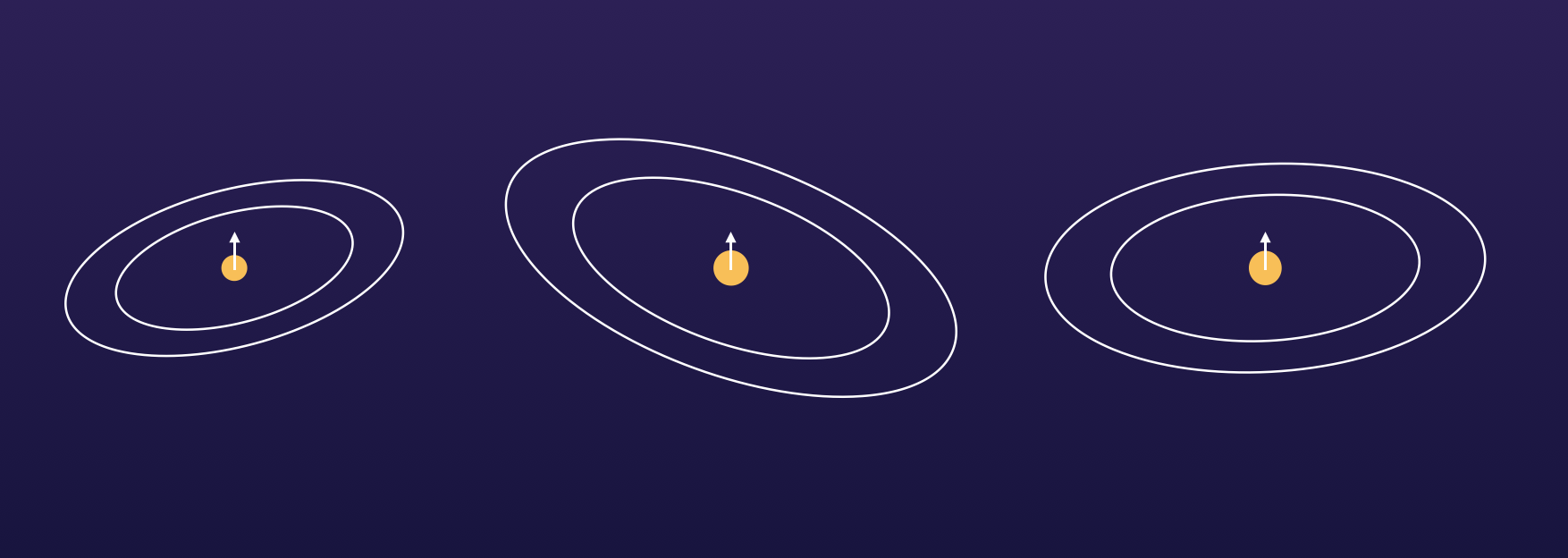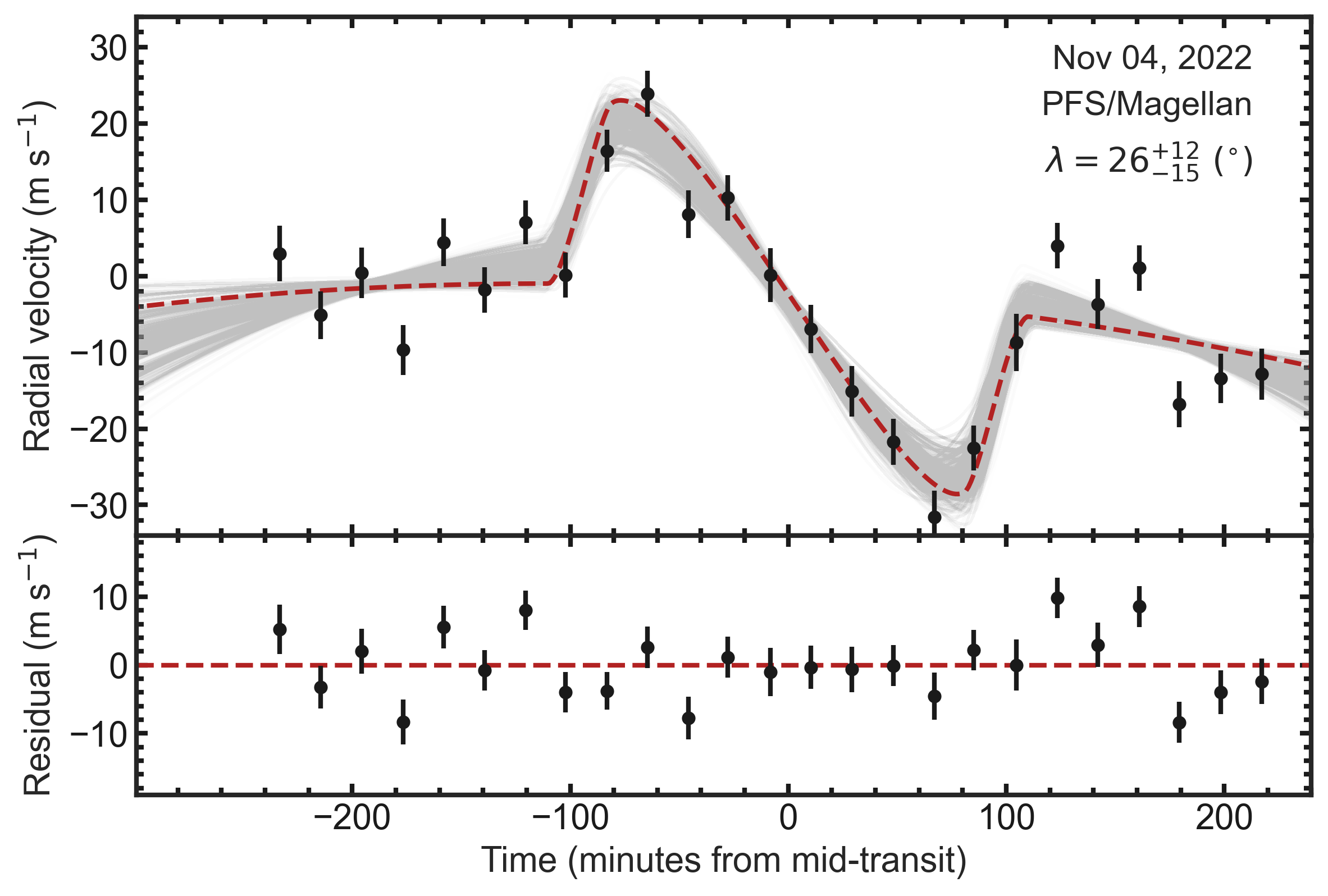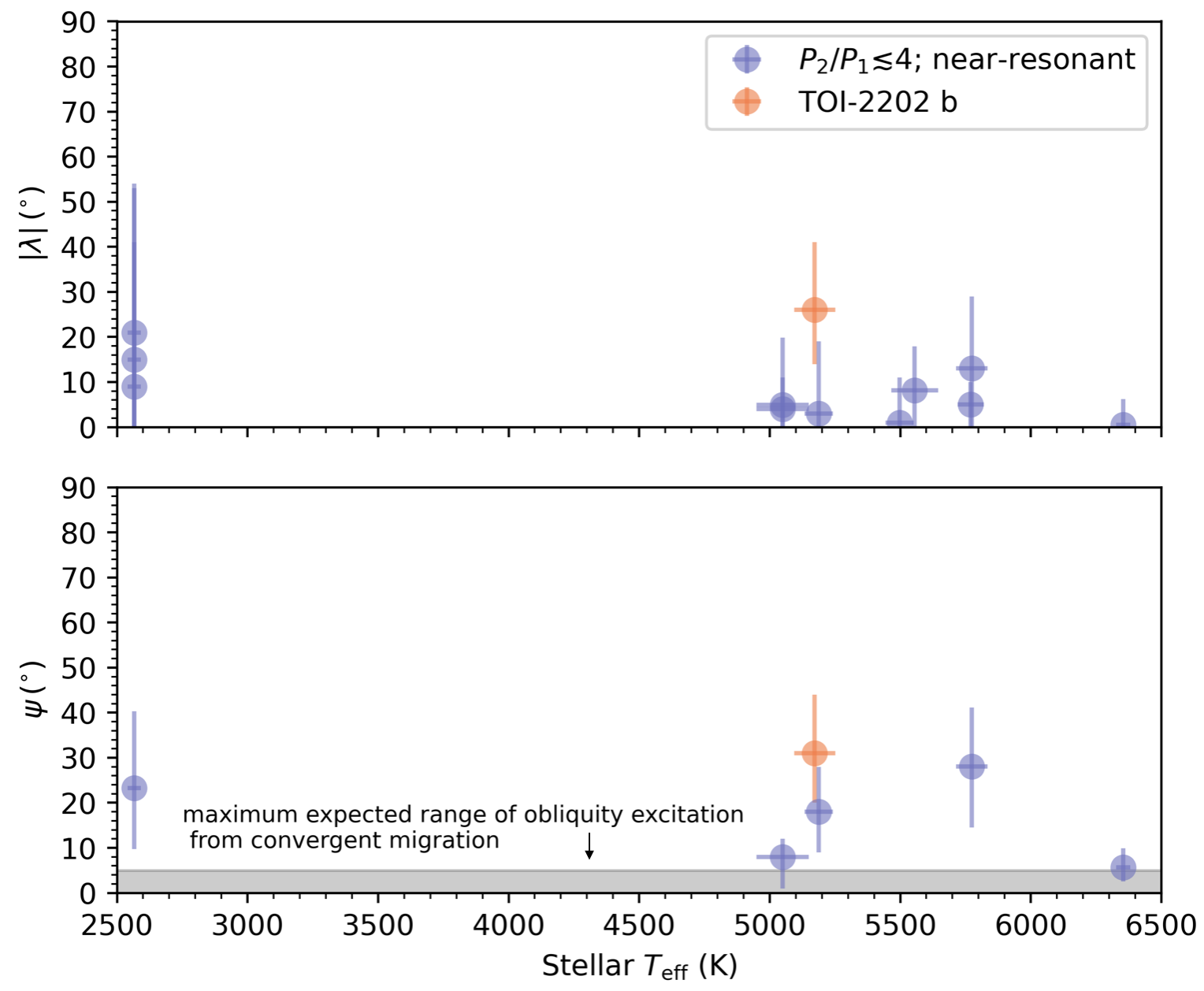Research Highlight #9
Evidence for Low-Level Dynamical Excitation in Near-Resonant Exoplanet Systems
(Rice, Wang, Wang, et al. 2023, in press, AJ)

In some exoplanet systems, pairs of planets have been found in orbital configurations that are synchronized — that is, the exoplanets' orbital periods are simple integer ratios of each other. These configurations are known as "mean motion resonances", and they are relatively delicate such that they suggest an absence of strong dynamical perturbations within the system. As a result, planet pairs in or near mean motion resonances offer an intriguing opportunity to examine the initial conditions of planetary systems.
In this work, we focus on how near-resonant systems inform the primordial distribution of tilts, or stellar obliquities, in exoplanet systems. Our goal is to understand how and why exoplanets have, in some cases, been found on such tilted orbits that they orbit sideways or backwards relative to their host stars' spin.
This study was motivated by our team's measurement of the orbital geometry of the TOI-2202 b warm Jupiter, which lies in a near-resonant (2:1) configuration with its outer neighboring companion. This means that TOI-2202 b orbits twice for every one orbit of the outer, TOI-2202 c planet. Measuring the transits of such systems is relatively tricky: the near-resonant configuration enhances the dynamical influence of the two planets on each other, such that their transit times are no longer exactly periodic. In an observing campaign that included several telescopes around the world, we tracked the transits of the planet leading up to our orbital geometry measurement (Figure 1) to constrain our planetary model and to ensure that we knew what time to observe our target for our scheduled Rossiter-McLaughlin observation.

Figure 1: Transit measurements of TOI-2202 leading up to and simultaneous with our Rossiter-McLaughlin measurement on 11/4/22. The system exhibits significant transit timing variations (TTVs).
When the time came for our Rossiter-McLaughlin observation, we found that TOI-2202 b is not strongly misaligned with its host star, as shown in Figure 2. However, the derived spin-orbit angle, λ, was also not as close to alignment as we would have expected if all systems form exactly aligned with their host stars. After examining the stellar spin rate to derive the 3D spin-orbit angle ψ, we reaffirmed that the system is near, but nearly 3σ away from *exact*, alignment.

Figure 2: Rossiter-McLaughlin measurements and best-fitting models for TOI-2202 b using the PFS/Magellan spectrograph.
We then turned our attention to the full set of exoplanets that (1) reside in near-resonant configurations and (2) have a spin-orbit angle measurement, shown in Figure 3. Interestingly, we found that several exoplanets within this sample have been found with likely offsets from exact alignment. We used a Kolmogorov-Smirnov test to reject the null hypothesis that the observed ψ distribution exhibits consistent, near-exact alignment (<5 degrees offset) that would be expected as a maximum level of excitation for systems that have retained near-resonances.

Figure 3: Distribution of spin-orbit measurements for near-resonant exoplanets. The gray shaded region denotes the maximum range of values expected for systems that have retained near-resonances.
Ultimately, we conclude that planetary systems are likely born from protoplanetary disks that span a range of low-level misalignments ( ≲20 degrees). This is consistent with previous studies examining the range of typical tilts observed for protoplanetary and debris disks, as well as the range of misalignments expected solely from chaotic processes that occur during the process of star formation.
So, perhaps tilted systems are not so surprising — at least, not when the tilts are small! We find that low-level dynamical excitation is universal, and that it is observed even in the most pristine planetary systems. Given that our own solar system's planetary orbits are about 6 degrees misaligned with the Sun's equator, our findings indicate that, at least in some ways, maybe our solar system isn't such an oddball after all.